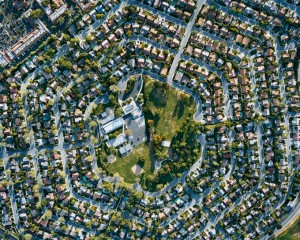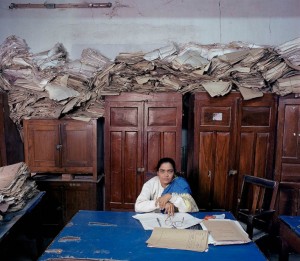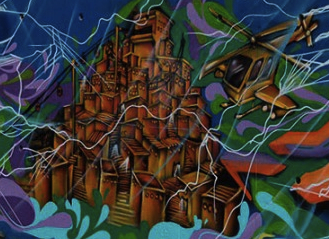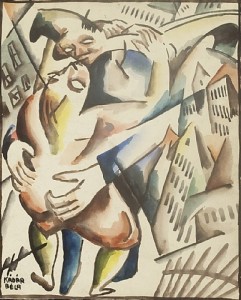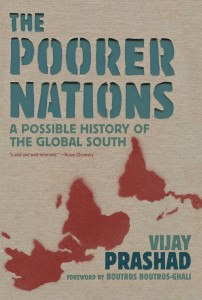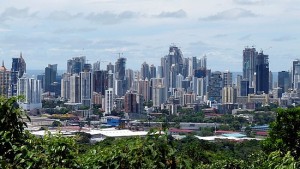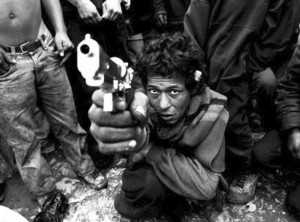 After five months, the Colombian government peace negotiations with the Revolutionary Armed Forces of Colombia (FARC) in Havana are still on the first—and most complicated—item of their five-point negotiating agenda: the restructuring of rural development. Things are moving slowly but steadily, with the government saying they’ve already hammered out a few pages of an agreement. One of the FARC’s main proposals has caused a stir (though it’s unclear how controversial it is at the negotiating table). A central point of the FARC’s proposal is a call for nine million hectares of land—an area approaching the size of Portugal—to be converted into Campesino Reserve Zones (Zonas de Reserva Campesina or ZRC). What’s raised howls from right-wing opponents is the FARC’s suggestion that these ZRCs be given a legal status similar to that of indigenous reserves and Afro-Colombian collective property (i.e. a degree of administrative autonomy). So at this stage the talks hinge on a question of political geography. Continue reading
After five months, the Colombian government peace negotiations with the Revolutionary Armed Forces of Colombia (FARC) in Havana are still on the first—and most complicated—item of their five-point negotiating agenda: the restructuring of rural development. Things are moving slowly but steadily, with the government saying they’ve already hammered out a few pages of an agreement. One of the FARC’s main proposals has caused a stir (though it’s unclear how controversial it is at the negotiating table). A central point of the FARC’s proposal is a call for nine million hectares of land—an area approaching the size of Portugal—to be converted into Campesino Reserve Zones (Zonas de Reserva Campesina or ZRC). What’s raised howls from right-wing opponents is the FARC’s suggestion that these ZRCs be given a legal status similar to that of indigenous reserves and Afro-Colombian collective property (i.e. a degree of administrative autonomy). So at this stage the talks hinge on a question of political geography. Continue reading
-
Recent Posts
Categories
- #Occupy
- Agriculture
- Antonio Gramsci
- Art
- Assemblages
- Bandits
- Boundaries
- Carl Schmitt
- City
- Critique
- David Harvey
- Development
- Dialectics
- Drugs
- Elites
- Everyday Life
- Forests
- Frontiers
- Gender
- Governmentality
- Guy Debord
- GWF Hegel
- Hegemony
- Henri Lefebvre
- Historical Materialism
- Historical-Geographies
- Illegality
- Insurgency/Counterinsurgency
- Interweb Motley
- Jester
- Karl Marx
- Land
- Law
- Maps
- Marxism
- Max Weber
- Media
- Michel Foucault
- Nation/Nationalism
- Networks
- Niccolo Machiavelli
- Peace
- Pirates
- Place
- Political Ecology
- Political Economy
- Post-Colonial
- Power
- Primitive Accumulation
- Race & Ethnicity
- Raymond Williams
- Scale
- Science & Tech.
- Security
- Sovereignty
- Spatiality
- Spectacle
- Territory
- Terror
- The Body
- The Sea
- The State
- Uncategorized
- Violence
- Work Hack
Archives
- February 2020
- September 2013
- August 2013
- June 2013
- May 2013
- April 2013
- March 2013
- February 2013
- January 2013
- December 2012
- November 2012
- October 2012
- September 2012
- August 2012
- June 2012
- May 2012
- April 2012
- March 2012
- February 2012
- January 2012
- December 2011
- November 2011
- October 2011
- September 2011
- August 2011
- July 2011
- June 2011
- May 2011
- April 2011
- March 2011
- February 2011
Fellow Tricksters
- Acme
- Antipode
- Cartographies of the Absolute
- Critical Legal Thinking
- Danger Room
- Decolonizing Solidarity
- Fragments & Correspondence
- Geographical Imaginations
- Gerard Toal
- Human Geography
- Monthly Review
- Mute
- New Left Review
- Open Geography
- Path to the Possible
- Peoples Geography
- Philosophy in a Time of Error
- Place Hacking
- Pop Theory
- Posthegemony
- Progressive Geographies
- Public Political Ecology Lab
- Radical Cartography
- Social Design Notes
- Society & Space
- Space and Politics
- Spatially Inclined
- Strange Maps
- Street Art Utopia
- The Disorder Of Things
- The Geography Collective
- Trevor Paglen
- Visual Complexity

